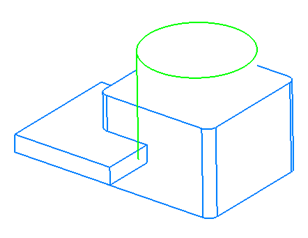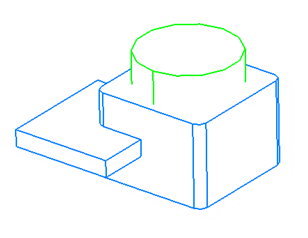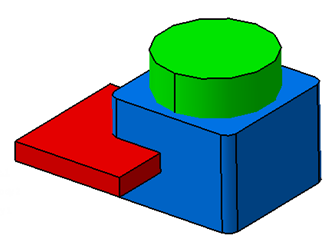HLR Algorithms
Two HLR algorithms can be used to compute a HLR scene: an exact mode and a polyhedral mode.
- Exact mode uses exact geometry
- Polyhedral mode enables to compute HLR on non-exact geometry that can be found in third-party content, in CGR files (when working with the cache system, for example) or in specific V4 elements.
The Exact mode is more CPU- and memory-intensive than the Polyhedral mode but gives a more accurate result.
HLR and Dynamic Hidden Line Removal are not computed the same way because Dynamic Hidden Line Removal is primarily based on the graphics card. Therefore, discrepancies might appear between the two results.
For example, on screen in 2D Layout for 3D Design in HRD mode, the intersection profile of an object with a front cutting plane or a back clipping plane is not displayed. However, the HLR print result shows this intersection profile:
| Shading with Edges | HRD | HLR |
|---|---|---|
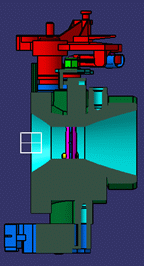 | 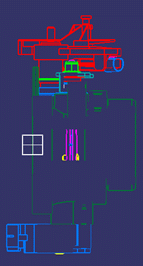 | 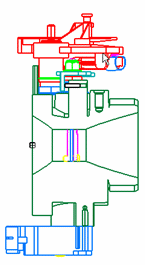 |
Regarding transparent faces, HLR algorithms consider them as opaque which means that objects behind these faces are hidden. On the contrary, the HRD rendering mode considers transparent faces as completely transparent by default. To force the HRD mode to consider transparent faces as opaque, use the Perform transparent faces as opaque in HRD mode option.
Linetype
The linetype and the line thickness of drawn edges are taken into account in HLR rendering mode. This means that the linetype displayed in the print preview is the one you see in the 3D. For example, if the linetype is defined as "empty", edges are not displayed.
